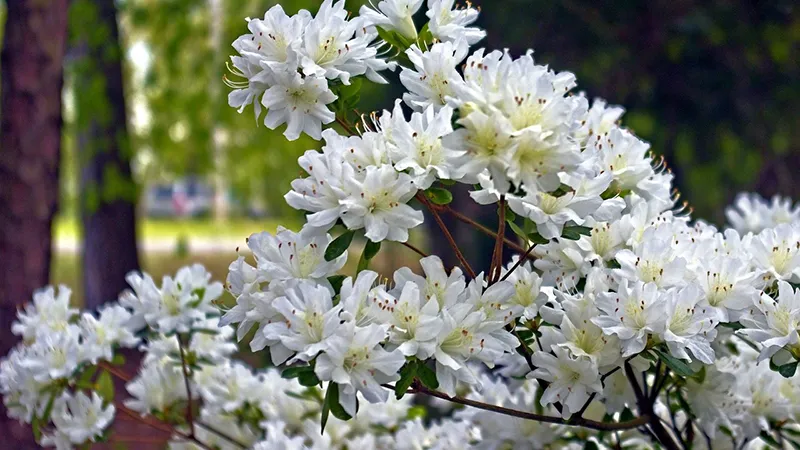Kibler ArkansasATTRACTIONS & THINGS TO DO
Listed below are the best attractions and things to do near Kibler, Arkansas.
1. Popeye Statue
ICONIC SAILOR MAN MONUMENT
The Popeye Statue is a bronze monument of everyone's favorite sailor man located in Popeye Park surrounded by fountains. The statue stands as a tribute to Alma's reputation as the 'Spinach Capital of the World'. Visitors often gather here during the annual Spinach Festival held on the third weekend in April.
2. Lake Alma Hiking Trail
SCENIC NATURE PATHWAY
Lake Alma Hiking Trail offers visitors a chance to explore the natural beauty surrounding the tranquil lake. The trail provides a peaceful setting for hiking, bird watching, and enjoying the outdoors in all seasons. Hikers can experience the diverse flora and fauna native to the Western Arkansas region while following well-maintained paths.
3. Alma Aquatic Park
FAMILY-FRIENDLY WATER RECREATION
Alma Aquatic Park provides refreshing summer fun for families and visitors of all ages. The park features swimming pools, water slides, and splash areas designed for maximum enjoyment during hot Arkansas summers. Visitors appreciate the clean facilities and attentive lifeguards that ensure a safe and enjoyable experience.
4. Clear Creek Park
OUTDOOR RECREATION AREA
Clear Creek Park offers a variety of outdoor activities in a beautiful natural setting. The park includes picnic areas, walking paths, and open spaces perfect for family gatherings and community events. Visitors can enjoy the peaceful atmosphere while appreciating the well-maintained grounds throughout the year.
5. Fort Smith National Cemetery
HISTORIC MILITARY MEMORIAL
Fort Smith National Cemetery contains interments dating back to the War of 1812, including notable figures such as Judge Parker, many of his deputy marshals, and General William O. Darby. The cemetery serves as a solemn reminder of the region's rich history and the sacrifices made by military personnel. Visitors can explore the grounds and pay respects to those who shaped the development of Western Arkansas and the nation.
6. Fort Smith National Historic Site
PRESERVED FRONTIER HERITAGE
Fort Smith National Historic Site encompasses a 200-year-old property that includes remains of two frontier forts and the 19th-century Federal Court for the Western District of Arkansas. The site offers daily access from 9 a.m. to 5 p.m., with free admission for all visitors. History enthusiasts can explore multiple preserved structures that tell the story of law and order on the American frontier.
7. Belle Point
ORIGINAL FORT FOUNDATIONS
Belle Point allows visitors to walk among the foundation remains of the first Fort Smith, which operated from 1817 to 1824. The site offers a glimpse into early 19th century military architecture and strategic positioning along the Arkansas River. Interpretive displays help visitors understand the significance of this frontier outpost in American westward expansion.
8. Trail of Tears Path
NATIVE AMERICAN MEMORIAL
The Trail of Tears Path features a 0.75-mile paved trail with exhibit panels detailing the tragic journey of the Five Civilized Tribes. The trail follows the Arkansas River to where the Trail of Tears water route begins, providing a sobering educational experience. Visitors can reflect on this significant and somber chapter of American history while walking the same path used during the forced relocation.
9. The Commissary
OLDEST FORT SMITH BUILDING
The Commissary stands as the oldest building in Fort Smith and once housed Judge Parker's chambers on its upper floor. This historic structure provides visitors with an authentic glimpse into 19th-century frontier architecture and governance. The building's preservation allows modern visitors to connect with the daily operations of this important military and judicial outpost.
10. Historic Downtown Fort Smith
VIBRANT CULTURAL DISTRICT
Historic Downtown Fort Smith features an array of restaurants, shops, and the Scott Theater, which is the oldest theater in Arkansas still in operation. Many of the downtown buildings are listed on historic registers, preserving the architectural character of this frontier city. Visitors can enjoy shopping, dining, and entertainment while surrounded by the charm of well-preserved 19th and early 20th century structures.
11. Veterans Wall of Honor
MILITARY SERVICE MEMORIAL
The Veterans Wall of Honor pays tribute to the brave men and women who served in the United States armed forces. The memorial features inscriptions and dedications that recognize the sacrifices made by service members from the region. Visitors often come to reflect, pay respects, and learn about the military contributions of Arkansas citizens throughout American history.
12. Peace Pole
SYMBOL OF HARMONY
The Peace Pole stands as a symbol of harmony and understanding in the community. This monument represents the universal human desire for peace and cooperation across cultural boundaries. Visitors can reflect on its message while enjoying the surrounding park area.
13. Gazebo Books
CHARMING INDEPENDENT BOOKSTORE
Gazebo Books offers a welcoming atmosphere for book lovers in Western Arkansas. The bookstore features a carefully curated selection of titles spanning multiple genres and interests. Visitors appreciate the knowledgeable staff and cozy reading nooks that make this shop a cultural cornerstone of the community.
14. Testament: The Little Rock Nine Monument
CIVIL RIGHTS LANDMARK
Testament: The Little Rock Nine Monument commemorates the courageous students who integrated Little Rock Central High School in 1957. The powerful bronze sculptures capture the determination and dignity of these civil rights pioneers. Visitors are moved by this artistic representation of a pivotal moment in American civil rights history.
15. Paris-Logan County Coal Miner's Memorial
INDUSTRIAL HERITAGE TRIBUTE
The Paris-Logan County Coal Miner's Memorial honors the miners who worked in the once-thriving coal industry of the region. The monument acknowledges the difficult and dangerous work that supported local communities and fueled industrial growth. Visitors gain insight into an important aspect of Arkansas's economic history and the lives of those who worked underground.
